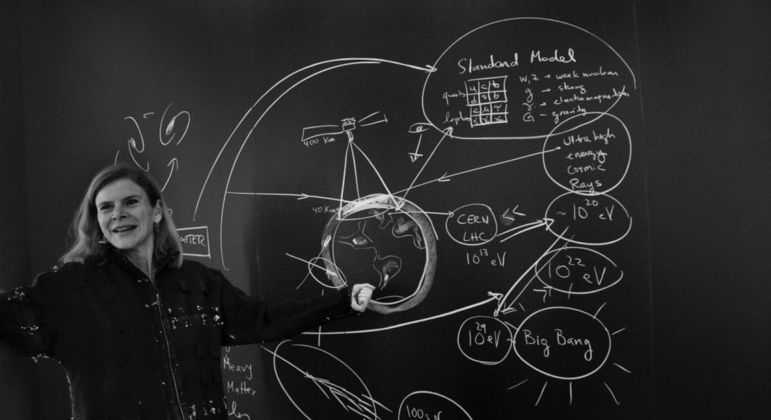Brazilian Angela Villela Olinto became a member of the United States Academy of and Arts and Sciences, similar recognition was given to Albert Einstein and Nelson Mandela. The University of Chicago professor and dean of the institution’s physics division was also invited to participate in the National Academy of Sciences.
In an interview with the portal R7, Angela tells how she was one of the pioneers in the research of astroparticles and the first woman teaching in the Physics department at the University of Chicago.
“It was surprising to be a member of both academies at almost the same time, the recognition of colleagues is always the most difficult”, says Angela. “Academies are of great importance because they influence Congressional investments, I will be able to give my opinion and contribute in other ways besides research.”
More than 1,000 scientists unite to help women in the pandemic
With a degree in physics from PUC – RJ (Pontifical Catholic University of Rio de Janeiro), Angela received a doctorate in physics from MIT (Massachusetts Institute of Technology). “When I studied in Brazil, in the early 1980s, the class was small, but there were three students and eight men, but I had classes with teachers”, he recalls.
The scare came at MIT. “It was a shock when I arrived in the United States to study, I was in a room with 60 men and another student, who gave up, so I was the only woman to finish her doctorate.” Angela says that in the 1980s, the Institute did not have a professor in the field of physics.
Unprecedented platform on women scientists is launched in SP
Already in college Angela started to research particle physics and, in her doctorate, she became interested in astrophysics. “From the post-doctorate onwards, I dedicated myself to building this new field that brings together the two areas of my previous interest”, says one of the pioneers in the study of astroparticles.
Opening new paths
“We study new forms of energy, we seek to better understand particles and how neutrinos interact in particular, which come from astrophysical sources far from the solar system”, he summarizes. Angela also looks at black holes and galaxies and the energy they produce.
The study of neutrinos has attracted the attention of the scientific community. In 2015, Arthur B. McDonald, from Queen’s University, Canada, and Takaaki Kajida, from the University of Tokyo, Japan, won the Nobel Prize in Physics for discovering the mass of neutrinos.
With her research, Angela was the first woman to teach in the physical sciences and mathematics division at the University of Chicago. “It is not easy to deal in a mostly male environment, there are always those who think you shouldn’t be there, but I have always made good partnerships and the results have been positive.”
In 2018, in addition to classes and research, the Brazilian assumed the position of dean or director of the department. “The administrative part made it possible for me to hire more women, I don’t want to be the only or the last, but I bet on diversity, people from other countries, with different views bring new experiences, which is great for the environment and for science.”
NASA
“When you dedicate yourself to research, you end up in places you can’t even imagine” one of them was the creation of one of the largest laboratories for observing energy particles built in Argentina, the Pierre Auger Observatory. Angela participated by providing theoretical support for observations and research.
“Although it is a very large laboratory, not enough for our research, we suggest expanding it to a space project, but that would be very expensive in 2010”, he explains. In order not to lose a decade in research, scientists counted on funding from the NASA, space agency of the United States for the creation of balloons with telescopes to observe the beams of light in the atmosphere and high energy rays.
The EUSO-SPB project (“Space observatory of the universe in a superpressure balloon”, in Portuguese), was developed with 80 people from 13 countries. The high pressure balloon is the size of a football field, the first was launched in 2017 and next year, in 2023, the second will be 100 days in space sending data.
The telescope for this second balloon is in production and is expected to send 50 million images per second. “The proposal is to show the results and prove that it is possible to do the space project.” This research continues until 2030.
– .


